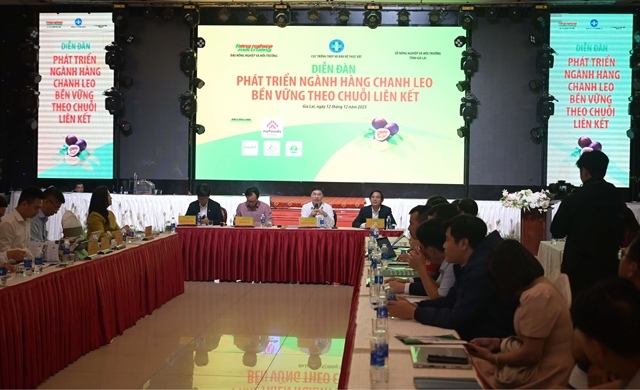Electronic firms to manage e-waste
Electronic firms to manage e-waste
Within the next two years, all producers of electronic products in Vietnam will be required to take responsibility for the environmentally friendly disposal of their products.

Under a new prime ministerial decision, from January 1, 2015, producers of electronic products will be responsible for treating or recycling electronic waste including computers, printers, cameras, mobile phones, TVs, refrigerators, air-conditioners and washing machines.
To ensure compliance, producers must annually report the quantity of products produced or imported which have been sold in Vietnam, and the results of retrieval and disposal of discarded products in accordance with the Ministry of Natural Resources and Environment’s guidelines.
Currently, producers are not required to perform any of these activities.
In order to help companies achieve these targets, the world’s leading IT multinational corporations like Apple, Canon, Dell, Lenovo, Hewlett Packard, Panasonic, Sony and Toshiba have formed the Information and Communications Technology Group (ICT Group) which will work in tandem with Vietnam’s Institute for Environmental Science and Technology (INEST) to create an e-waste collection and treatment model in the country.
Under a joint report by the ICT Group and INEST on the issue, producers need to collect, dismantle, treat or recycle e-waste, and establish collection centres or authorise other establishments to collect e-waste. Producers also need to transport discarded products from collection centres to recycling facilities.
Monina De Vera-Jacob, Southeast Asia Environmental manager of Hewlett Packard Asia Pacific, said: “Producers must collaborate with different stakeholders [the government, importers, distributors and retailers] to establish a management system including collection, sorting and recycling discarded products.”
“Producers must establish a financial mechanism for collecting and recycling e-waste,” she added.
Under plans outlined by the joint report, consumers will bring discarded electronic products to designated collection centres, before such e-waste is transported to producers’ appointed recycling facility.
“If this model becomes a reality, producers will have to spend money implementing transportation, treatment and recycling activities,” INEST director Huynh Trung Hai told VIR. “This model is very common in many nations in Europe and Japan.”
However, Ho Kim Ngoc, director of locally-owned Ngoc Tan Kien Company which treats e-waste for Intel, Panasonic and Unilever, told VIR the model would be infeasible if unlicensed scrap collectors weren’t dealt with.
“Without such collectors, households will bring e-waste to collection centres,” Ngoc said.
Vietnam’s e-waste collection network is currently informal, comprising of primarily poor families who go door to door, searching for discarded products which can be sold for scrap. Hardly any of this e-waste is processed by registered firms and the informal process causes environmental pollution.
E-waste volume in Vietnam is increasing rapidly due to the sharp increase in demand for electronic products. In 2012, ICT hardware sales jumped 103 per cent to $23 billion, primarily for products such as smart phones, tablets and laptops.
Although the growth rate of discarded e-waste is forecast to fall from 2011 to 2020, “the high growth of ICT sales and discarded products has made Vietnam a potential Waste Electric and Electronic Equipment (WEEE) recycling market,” said Deputy Minister of Natural Resources and Environment Bui Cach Tuyen.
The joint report estimated that by 2020 about 161,000 TVs, 97,000 PCs, 178,000 refrigerators, 136,000 washing machines, and 97,000 ACs will require recycling in Hanoi. Meanwhile, e-waste in Ho Chi Minh City is predicted to comprise 700,000 TVs, 290,000 PCs, 424,000 refrigerators, 339,000 washing machines, and 330,000 ACs, by the same period.
There are currently around 400 electronic producers in Vietnam, 25 per cent of which are foreign invested.
vir
























